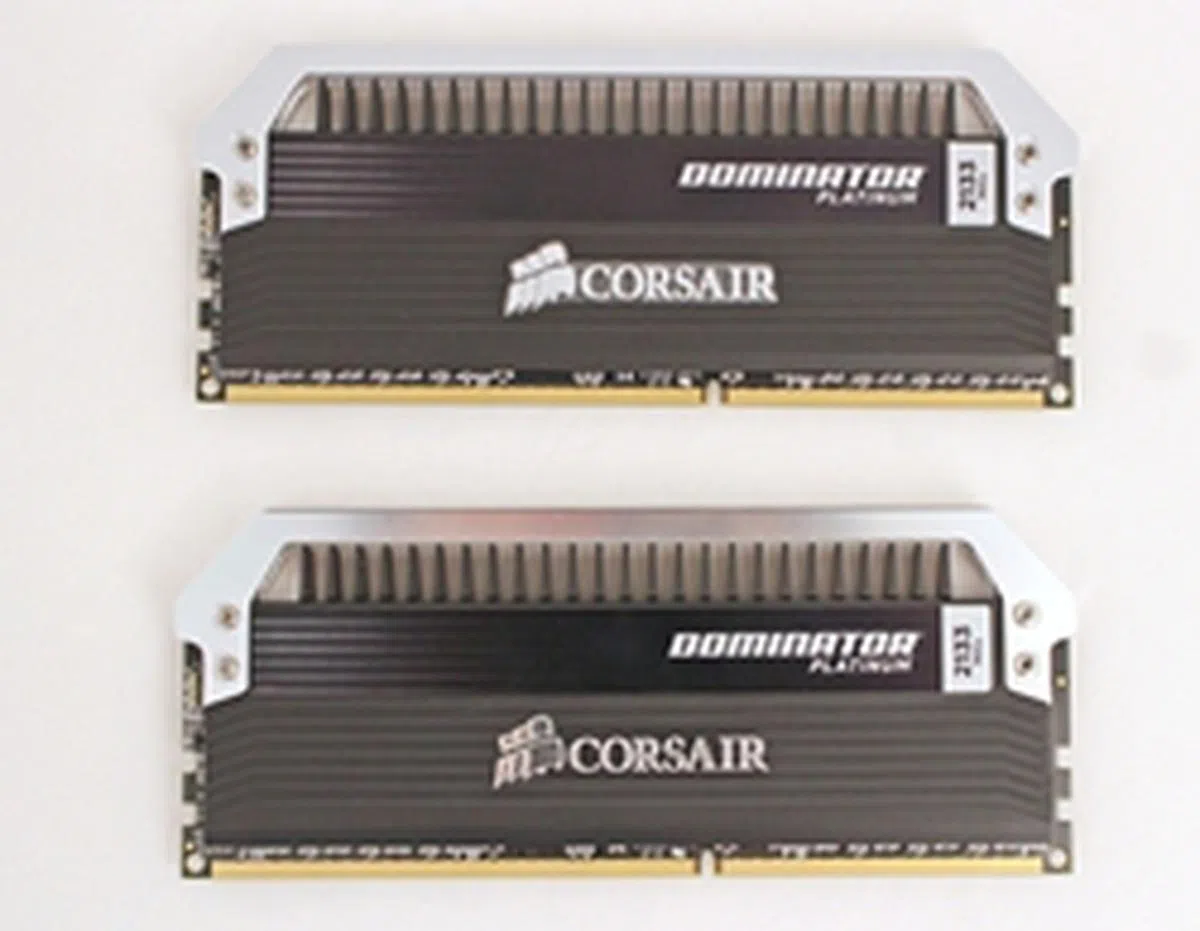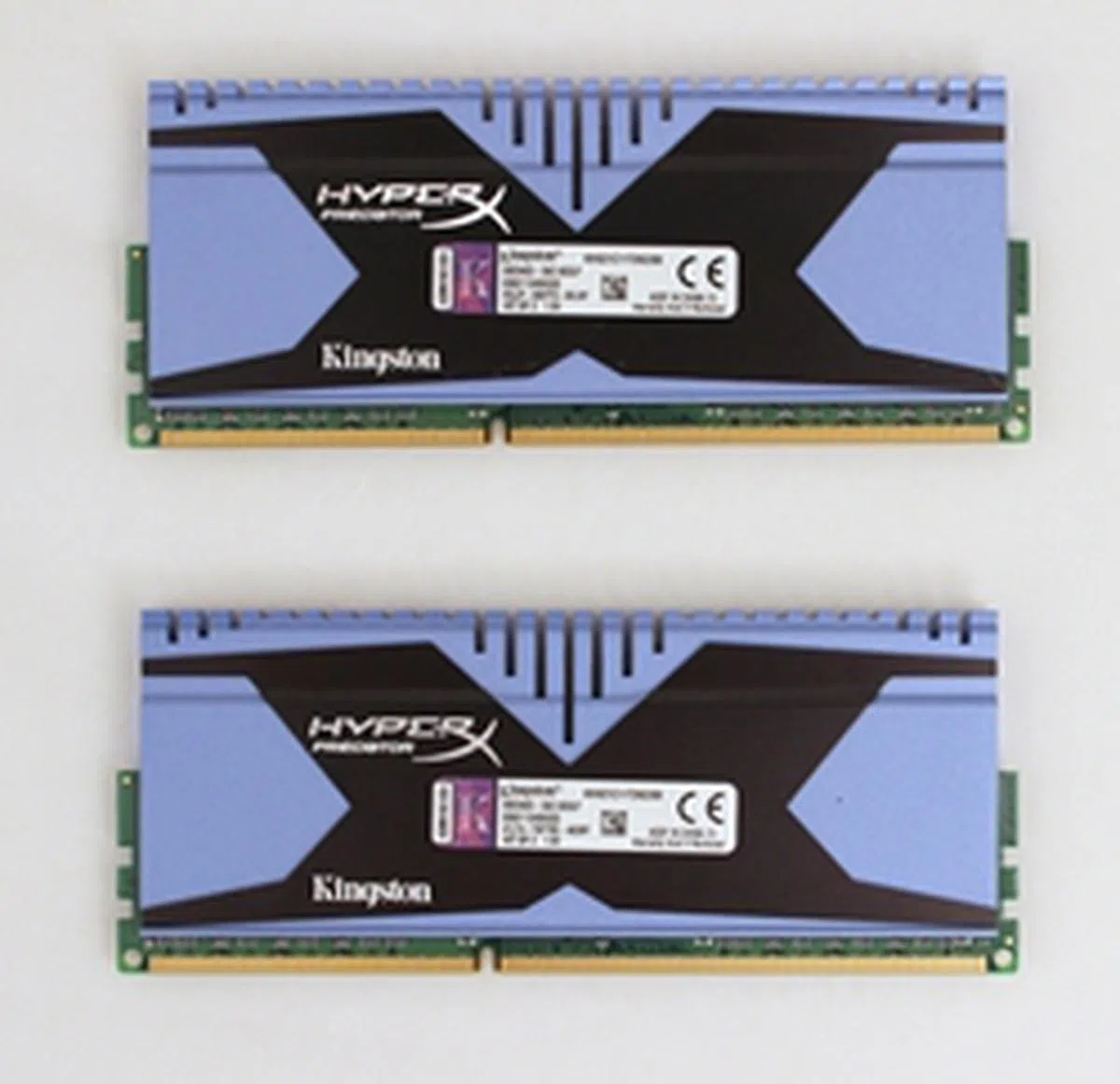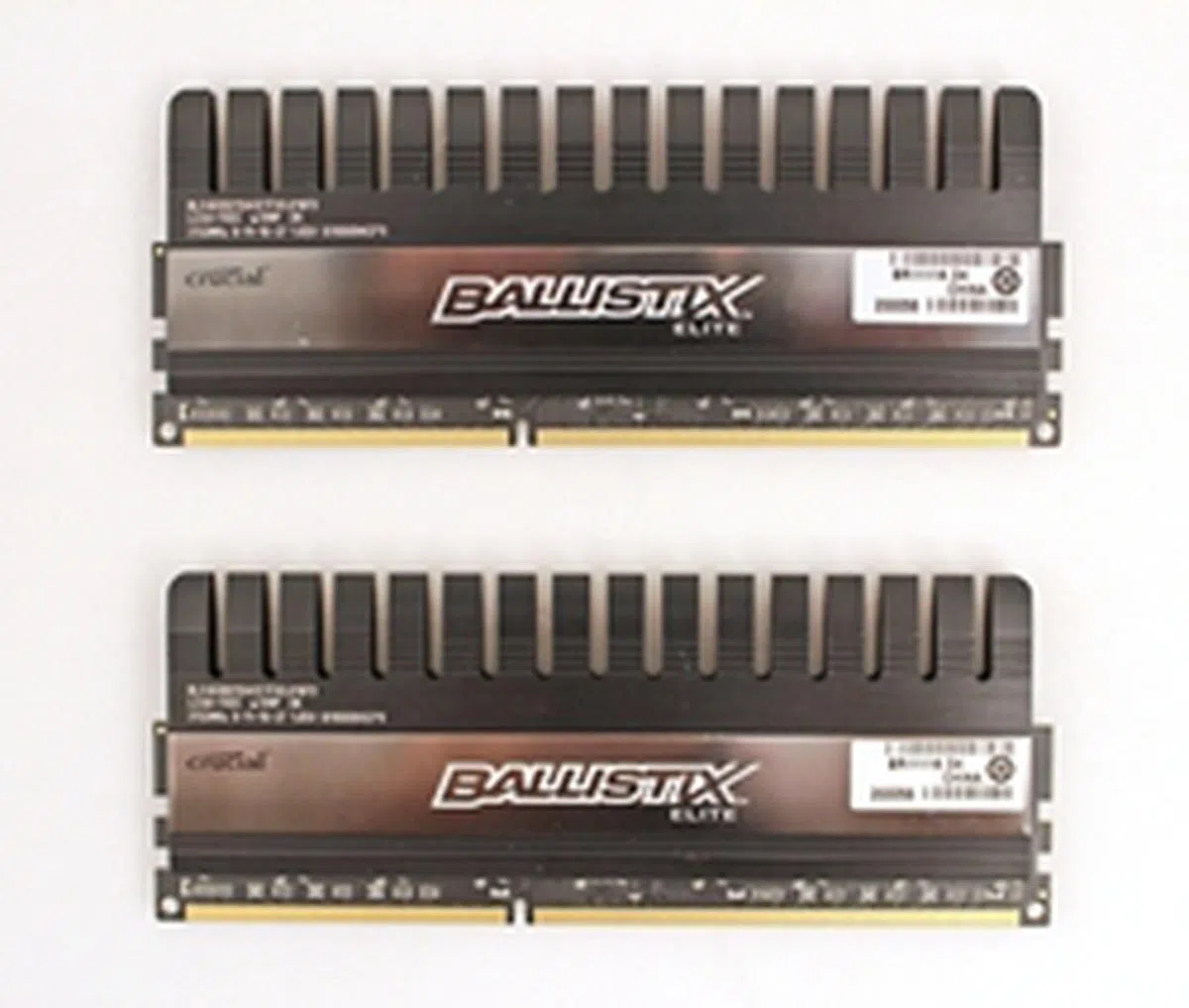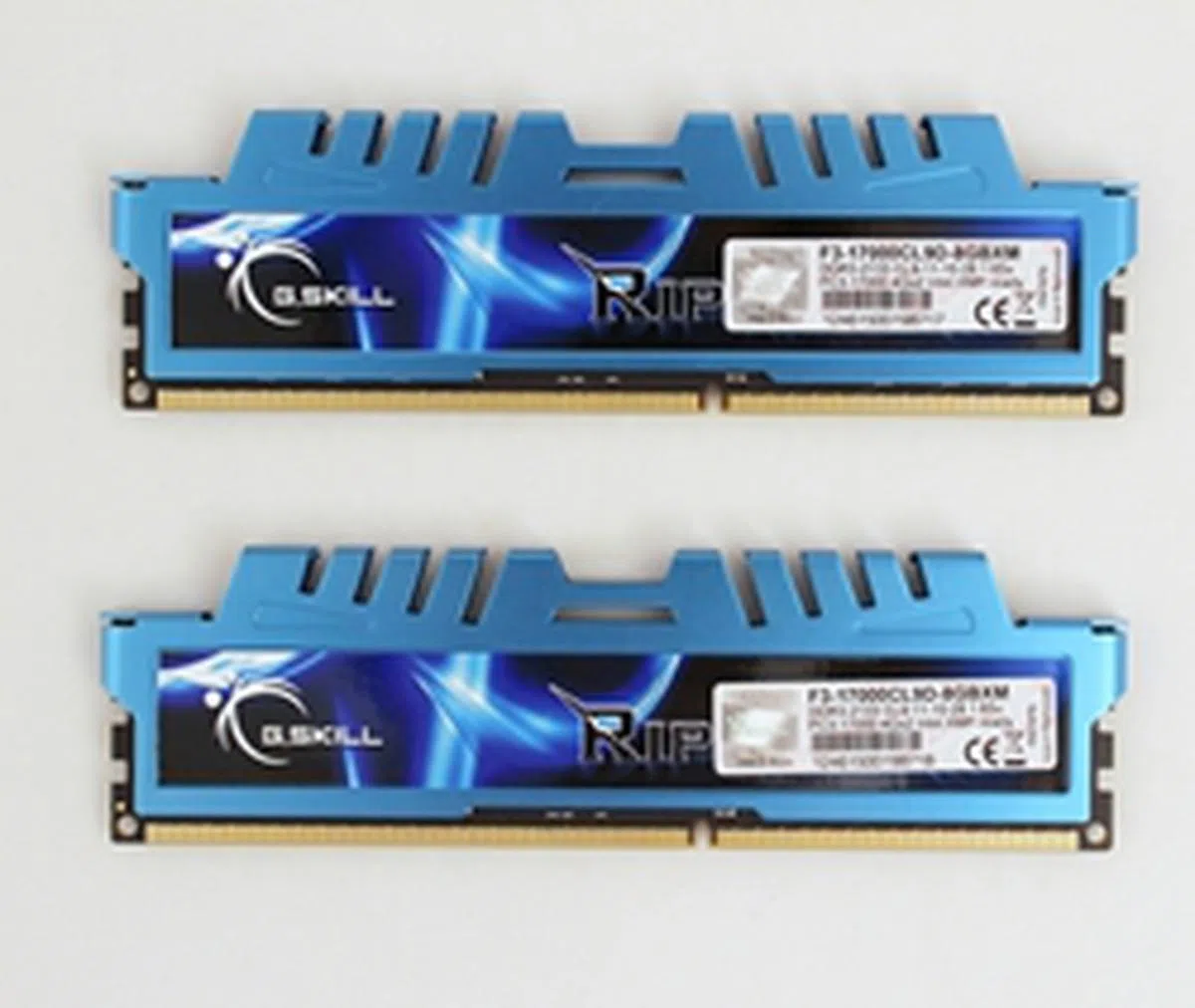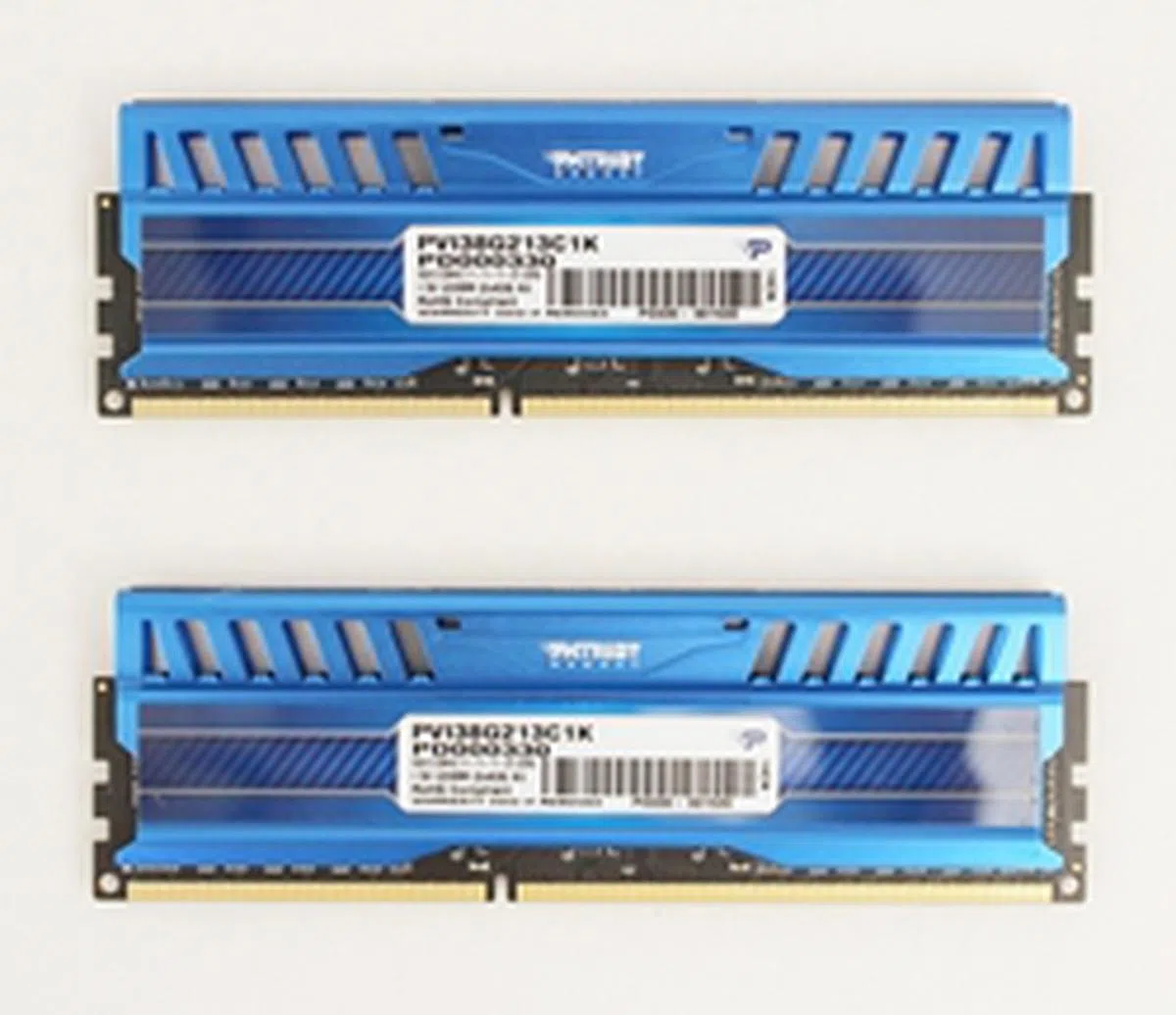8GB DDR3-2133MHz Memory Kits Shootout
DDR3 memory modules rated for 2,133MHz operating frequency reside at the sweet spot of being able to support the official memory standards of the latest Intel and AMD PC hardware platforms and has the headroom to excel further without a heavy toll on your wallet. We rounded up five such 8GB kits for comparison.
By Wong Chung Wee -
Making the Case for DDR3-2133 Memory Kits
Upgrading the system memory capacity of your PC is usually a case of determining the total required capacity based on the kind of applications you run (especially concurrently), figure out the preferred memory configuration, order the respective memory modules or upgrade kit(s) and plonk those sticks into the DIMM slots of PC’s motherboard. It's not often that we need to make a case for memory modules for higher clock frequencies if mainstream DDR3 (Double Data Rate Type three) memory kits rated at DDR3-1333 do the job reasonably well (and more so if they are low latency parts).
However, with the launch of new processors from Intel and AMD, with their corresponding hardware platforms that feature support for higher-rated memory modules, the justification for speedier memory is sound. For example, the server-grade Sandy Bridge-E processor, which was launched in early 2012, is compatible with DDR3-1600 memory modules in quad-channel configuration.
The more mainstream and recent third generation Intel Ivy Bridge CPUs also have support for such memory modules in dual-channel configuration while AMD’s latest Trinity APU officially supports even higher-rated memory modules that operate at DDR3-1866 frequency.

Shown here are the five sets of DDR3-2133 memory modules we have rounded up for our comparison. They are from Corsair, Crucial, G.Skill, Kingston and Patriot Memory.
The Case for Higher Clock Rates
In order to justify memory modules with high clock rates such as with the batch we've rounded up, we need to consider the needs for higher memory bandwidth and when the extra cost spent on them would be justifiable. The clock rate of a memory module directly affects its memory bandwidth; i.e., a DDR3-2133MHz part has a higher memory bandwidth than a DDR3-1866MHz counterpart. Theoretically, the higher-rated memory module has a maximum bandwidth of about 17,066 MB/s while the lower-rated memory module’s upper ceiling bandwidth is approximately 14,933 MB/s.
With the advent of integrated graphics engine cores on both Intel and AMD processors, there is a need for these graphics cores to be fed data from the system memory at a speedier rate in order for them to realize their true potential. The integrated graphics processors on the current generation of Intel Core CPUs as well as AMD’s Trinity Accelerated Processing Units (APU) have demonstrated their ability to scale accordingly to system memory data rates. Such hardware development drives the need for higher-end memory modules for mainstream user hoping to get the best out of their system.
Not forgetting overclockers and power users, such memory modules will offer them another avenue to push their rigs to higher performance levels by increasing the base clock frequencies of their motherboards. Generally, the DRAM frequency is obtained by multiplying the base clock frequency with the system's memory multiplier; hence, as an overclocker attempts to increase the base clock in an attempt to fine tune his overclocked rig, the extra headroom provided by the higher clock rates of these memory modules will come in handy. At the time of writing, we understand that there are already DDR3-2800 memory modules on the market that are sure to satisfy even the most ardent overclockers on the scene.
A Short Refresher on Latency Timings
However due to latency timings, two memory modules with the same theoretical maximum transfer rate can achieve different performance levels. When both modules are operating at the same clock rate, i.e., DDR3-2133, their memory timings will make a difference. This is because memory timings define how fast certain internal memory operations can take place and are measured in clock cycles. For example, one of the prominent parameters called CAS Latency (or CL for short) indicates the number of clock cycles the memory module will take before returning data requested by the processor. A CL-9 memory module will have a delay interval of nine clock cycles to deliver a requested data, whereas a memory module with a CAS Latency 7 will complete the same task in just seven clock cycles. While both modules may run at the same clock rate of DDR3-2133, the second memory module will be faster, as it would have delivered data sooner.
From our experience, and based on current RAM prices, we would recommend 8GB of DDR3-2133 matched pair kits as a starting point for those venturing into the realms of overclocking but don't really have heavy computing requirements. The higher rated frequency of these memory modules are compatible with both the latest Intel and AMD platforms and aren't over-the-top in requirements that may drastically reduce compatibility with processors and motherboards.
These kits have two memory modules, each of 4GB capacity, that are ideal for anyone who is building a mainstream desktop system or a HTPC for the den. Those who've higher requirements can easily consider getting an extra kit for double the capacity or opt for a higher density kit to conserve DIMM slot usage for future upgrading needs. Furthermore, despite the increase in the rated operating frequency than the official platform specs, all the memory module kits that we've gathered in this shootout managed to stick to the Intel-recommended 1.65V standard. We rounded up five such pairs from Crucial, Corsair, G.Skill, Kingston and Patriot Memory to put them through their paces and we'll detail them on the following page.
Corsair Dominator Platinum with Corsair Link Connector (1.65V, 8GB Dual-Channel DDR3-2133 Memory Kit)
This memory kit from Corsair sport the lowest timings of 9-11-10-27, when compared with the rest of the contending kits. Its heat spreaders look menacing and they feature LED lighting when in operation.

The Corsair Dominator Platinum with Corsair Link Connector and is one of the most feature-rich memory modules we have come across.
The pair of memory modules don't work in isolation as they support the Corsair Link Connector feature. This allows you to connect all supported Corsair products (from CPU coolers to chassis) to each other for monitoring purposes. This in turn allows you to get a constantly updated situation picture of the operations of these interlinked components through a singular software control panel.

The Corsair Link interface allows for monitoring of the temperature, health and activity of individual ICs of each memory module.
Crucial Ballistix Elite Series (1.65V, 8GB Dual-Channel DDR3-2133 Memory Kit)
This pair of memory modules from Crucial Ballistix Elite Series feature a distinctive black PCB and heat spreader of the same color that extends from it. This design makes this kit of one the more aesthetically pleasing memory modules that we've seen. Its voltage is rated at 1.65V and it has one of the lowest latency timings of 9-11-10-27, which will definitely help in its performance.

The Crucial Ballistic Elite Series memory modules appear to have their black heat spreaders extending from their black PCB.
G.Skill RipjawsX (1.65V, 8GB Dual-Channel DDR3-2133 Memory Kit)
G.Skill memory modules tend to favor red heat spreaders; however, this particular kit has eschewed the usual and went with blue instead. The G.Skill RipjawsX kit is rated to operate at 1.65V with latency timings of 9-11-10-28. According to its official specifications, this kit is targeted at system builders who want to enjoy the computing prowess of the current third generation of Intel Core processors.

The G.Skill RipJawZ memory module sports a light blue heatspreader with teeth that vaguely resemble that of a buzzsaw.
Kingston HyperX Predator (1.60V, 8GB Dual-Channel DDR3-2133 Memory Kit)
This pair of memory modules is one of the newest series from Kingston and one of the main changes to this series is the redesigned heat spreader and its stout design will be much appreciated by rig builders who need the extra headroom in order to accommodate their custom CPU coolers. It supports two Intel XMP profiles for easy configuration; the first profile lets the modules operate at DDR3-1600 while the other runs them at DDR3-2133.

Like the G.Skill memory modules, the sticker label on the Kingston HyperX Predator (T2) memory module contains detailed information with regards to its latency timings, operating voltage as well as specific SKU code.
Patriot Memory Viper 3 Intel Extreme Masters, Limited Edition (1.5V, 8GB Dual-Channel DDR3-2133 Memory Kit)
This pair of memory modules sport blue heat spreaders that feature the Viper 3 variation design for its heat dissipating capabilities to ensure performance stability; however, due to its stated latency timings of 11-11-11-27, it is actually one of the slowest in comparison to its other counterparts. It does support speedier timings at a lower base frequency at DDR3-1600, which makes it an ideal companion for current Intel platforms if you don't intend to overclock your system.

The memory kit from Patriot Memory has the lowest operating voltage of 1.5V. The rest of the modules have operating voltages in the range of 1.6- to 1.65V.
[hwzcompare]
[products=370706,370771,370777,370781,370783]
[width=200]
[caption=8GB Dual Channel DDR3-2133 Memory Kits Compared]
[showprices=0]
[/hwzcompare]
How We Tested
To test the memory kits, we used a single platform whose exact specifications are listed below. We ran the memory at their specified voltage; while at the UEFI BIOS utility, we manually set the XMP profile that matched each kit's specified serial presence detect (SPD) indicated frequency and timings. After that, we ran a number of software benchmarks and one of most important was SiSoft Sandra Lite 2013a. We specifically made use of SiSoft Sandra’s Memory Bandwidth and Memory Latency tests. We used the former to gauge the data rate of each memory kit’s attainable throughput and higher rates are certainly what we are looking out for in each kit.
For the Memory Latency test that measures the duration of the transfer of a block of data (in nanoseconds (ns)), from the main memory to the processor. In this test, we are looking out for lower durations, which will indicate better performance. We also ran other benchmark tools to ascertain if performance scores recorded in SiSoft Sandra tests had any direct impact elsewhere in everyday usage. Last of all, we overclocked the base frequency of our test board from its default value of 100MHz in order to ascertain which memory module kit can be pushed furthest. We kept their memory timings within the the stated levels while conducting our overclocking trials to prevent adding further variables.
Test Configuration
- Intel Core i7-3770K @ 3.5GHz
- ASUS P8Z77-V Deluxe (BIOS Version 1709)
- MSI N460GTX Hawk graphics card (ForceWare 285.62)
- Western Digital Caviar Black 1TB SATA 6Gbps (one single NTFS partition)
- Windows 7 Ultimate (64-bit)
- Intel INF 9.2.3.1022 (Chipset Drivers)
Benchmarks
The following benchmarks were used to test the memory modules:
Memory Test Benchmarks
- SiSoftware Sandra Lite 2013a - Memory Bandwidth and Latency tests
- Futuremark PCMark Vantage (ver 1.03.1, 64-bit) - PCMark and Memories tests
- Futuremark PCMark 7 - Creativity and Entertainment tests
- SPECviewperf 9 - proe-04 and sw-01 viewset tests
- Crysis 1.2.1 - CPU Test 2, 1024 x 768, Medium settings for all except Physics at High
- Far Cry 2 - 1280 x 1024, Ranch Small Map, No AA, DX10, High Settings
Results - SiSoftware Sandra Lite 2013a
For this software suite, we focused on two of its tests that determine its sustained memory bandwidth and latency numbers for the memory modules. It is obvious at a glance that the two memory modules kits from Kingston and Patriot Memory are lagging, in terms of memory latency, to the other three pairs as they have lower CAS timings.
They are also lagging in terms of memory bandwidth performance as the same three pair with lower latency timings outperform them; the kit from the Crucial Ballistix Elite series taking top spot. The higher latency timings have directly hindered their ability for speedier data transfer when compared to their lower latency counterparts; hence, the bandwidth performance scores were skewed in favor of the kits from Corsair, Crucial and G.Skill.

Results - PCMark 7
For PCMark 7 testing, we focused on the Creativity and Entertainment tests. The test results are not as conclusive as those from SiSoftware Sandra; however, we do note that the Patriot Memory Viper 3 memory modules performing poorly on the Creativity test.

Results - SPECviewperf 9.0
For this test, only the Corsair Dominator Platinium series memory modules performed within expectations. The unexpected winner was the Kingston HyperX Predator who clearly outperformed the rest, especially its counterpart from the Patriot Memory Viper 3 Intel Extreme Masters Edition series.

Results - PCMark Vantage
With this benchmark, we can safely ascertain the last man in this shootout, and all fingers point to the Patriot Memory Viper 3 memory modules; however, the Crucial memory modules turned in the lowest score for the Memories test.

Results - Crysis 1.2.1
The clear winner is the kit from Crucial Ballistix Elite series while the rest failed to breached the 60fps mark.

Results - Far Cry 2
Although achieving 150.53fps to win the race by a hair's breadth, Crucial's memory modules kept to their winning form for the gaming benchmarks.

Results - Temperature
The Kingston and Corsair memory modules ran the coolest at 28 degrees Celsius while the G.Skill RipjawsX series ones operated at the highest temperature of 29.5 degrees Celsius.

Results - Overclocking
With their stated latency timings left untouched, we pushed the memory modules to determine their overclocking overheads. In terms of relative gains from their respective base non-overclocked bandwidth performance levels, the kits from Corsair, Kingston and Patriot Memory registered gains that range from 11- to 12%. Higher latency memory modules tend to provide more headroom for overclocking; however, the oddball in this mix is the Corsair, of lower latency stock, whose excellent OC performance can be attributed to its quality build components as well as its excellent heatspreader that has proven to provide the best cooling option.

The Corsair Dominator Platinum memory modules managed to reach an overclocked operating frequency of 2,354MHz, while the memory kits from both Crucial and G.Skill were tied at 2,310MHz. The Kingston ones were overclocked to 2,224MHz and the Patriot Memory Viper 3 memory modules brought up the rear with their OC operating frequency of 2,218MHz. In terms of the relative gains in operating frequency levels, the Corsair kit gained the most while the Patriot Memory Viper 3 kit has the least.
Model | Maximum Overclocked Frequency Achieved (MHz)
| Percentage Difference (from base frequency of 2,133MHz) |
Corsair Dominator Platinum with Corsair Link Connector (1.65V, 8GB Dual-Channel DDR3-2133 Memory Kit) | 2,354MHz | 10.36% |
Crucial Ballistix Elite Series (1.65V, 8GB Dual-Channel DDR3-2133 Memory Kit) | 2,310MHz | 8.30% |
G.Skill RipjawsX (1.65V, 8GB Dual-Channel DDR3-2133 Memory Kit)
| 2,310MHz | 8.30% |
Kingston HyperX Predator (1.60V, 8GB Dual-Channel DDR3-2133 Memory Kit) | 2,244MHz | 5.20% |
Patriot Memory Viper 3 Intel Extreme Masters, Limited Edition (1.5V, 8GB Dual-Channel DDR3-2133 Memory Kit) | 2,218MHz | 3.98% |
Conclusion
To reiterate, the memory modules we had tested in this shootout are rated at the operating frequency of DDR3-2133, and the first three pairs (Corsair, Crucial and G.Skill) operated at a voltage of 1.65V while the other two from Kingston and Patriot Memory operated at 1.60V and 1.50V respectively. In terms of performance levels, the latency timings played a crucial role and it can be clearly seen from the performance graphs on the previous pages. The two memory module kits with higher latency timings were consistently slower; while the three with lower (i.e., better) timings were vying for pole position.
In terms of overclocking, the higher latency timings of the Kingston and Patriot Memory memory modules put them in good stead as they made substantial gains in terms of bandwidth. Their lower operating voltages also gave them an advantage when we tested their temperatures under load; they both ran at a cool 28 degrees Celsius versus the highest recorded of 29.5 degree Celsius. Their price point of S$99 made them ideal choices for cost effective memory upgrades.
Model | Performance | Features | Value | Overall | Suggested Retail Price |
Corsair Dominator Platinum | 8.0 | 9.0 | 7.5 | 8.5 | S$185 |
Crucial Ballistix Elite Series | 8.0 | 8.0 | 7.0 | 8.0 | S$119 |
G.Skill RipjawsX | 7.5 | 7.5 | 7.0 | 7.5 | S$109 |
Kingston HyperX Predator | 7.5 | 7.5 | 9.0 | 8.0 | S$99 |
Patriot Memory Viper 3 Intel Extreme Masters, Limited Edition | 7.0 | 7.5 | 9.0 | 7.5 | S$99 |
In the end, the high-end Corsair Dominator Platinum kit stood out as it delivered consistent performance levels during our benchmarking tests. The keyword here is consistency as there are several benchmarks where the pole position changed hands between various memory modules, but the Corsair stood in good light from an overall average across all tests. It also proved its proud lineage as an enthusiast’s memory module kit as it achieved the highest overclocked frequency of 2,354 MHz that translated to the highest measured bandwidth of 31.426 GB/s in this shootout.

DDR3-2133 memory modules are positioned at the enthusiast and overclocking end of the memory spectrum. Besides their heatspreaders that differentiate them aesthetically, their real differences run skin-deep due to their different rated latency timings as well as their operating voltages.
The runner up in this comparison is the Kingston HyperX Predator. It is considerably cheaper than almost all of the memory modules; with the exception of the kit from Patriot Memory. Despite its higher latency timings, it achieved one of the highest performance scores in our PCMark tests. It was also one of the kits that operated at cooler temperatures in spite its low-profile heat spreaders. This memory kit has impressed us with its all-rounder performance and kept its cool while under load.
Our articles may contain affiliate links. If you buy through these links, we may earn a small commission.
